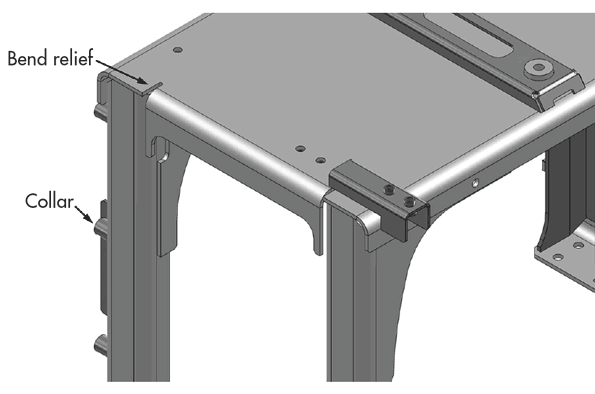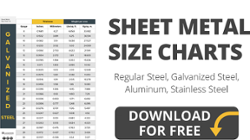Design for manufacturability is now a common concept in many industries, including the sheet metal design sector. Sheet metal design basic fundamentals make manufacturing a sure thing instead of crossing your fingers that everything will turn out OK.
Unfortunately, some creators of sheet metal enclosures and assemblies do not design with the manufacturing process in mind. This gives manufacturers like us a hard time fixing errors that could have been avoided in the design stage. In many cases the manufacturer ends up sending the design back for revision.
Sheet Metal Design Basics for Those Tired of Screwing Up
 (Photo courtesy Machine Design)
(Photo courtesy Machine Design)
Research shows manufacturers spend around 40% of their time fixing errors – with 24% of those being directly associated with manufacturability. Pause and think about that number -- and how wasteful it is to your supply chain.
There’s a big difference between how sheet metal components are designed in CAD systems and how they’re fabricated on the ground. Design-manufacturing complications arise because most design engineers create models that are meant to be produced in a “perfect” world. And in such a world, designers assume everything is fine and dandy on the manufacturing end. Therefore, they don’t make adjustments to accommodate certain aspects of production.
In the real world, many factors affect sheet metal products’ manufacturability. To name a few:
- Temperature
- Fabrication tools in use
- Bending
For example, if a designer specifies a product’s hole diameter, tolerances, and spacing without considering allowances, the manufactured design will vary from the one on paper after bending. This will result in misalignments.
Fortunately, with a design for manufacturability strategy, designers can account for manufacturability factors when developing sheet metal designs. This gives your product a better chance of success by:
- Reducing scrap from errors
- Improving lead times
- Simplifying a needlessly complicated design
5 Basic Factors in Sheet Metal Design for Manufacturability
1. Bend Relief
Bend relief refers to an indentation that designers should make on sheet metal designs so that the bending process is simple during manufacturing.
A flange that does not have a bend relief will have a higher degree of distortion and may cause tearing of the adjacent material.
According to a general sheet metal design thumb rule, the bend relief’s depth should be equal to or greater than the inside radius of the bend. The width, on the other hand, should be equal to or larger than the sheet metal’s thickness.
2. Hole Sizes
When a sheet metal design has small holes, it requires smaller punches during operation. This could result in breakage during manufacturing.
An important design tip, in this case, is to plan for holes whose diameter is equal to or greater than the sheet metal’s thickness.
3. Distance Between a Hole and a Bend
This is a big one.
Designers should leave adequate clearance between a hole and bend, or else the hole will get deformed when the sheet metal is bent during manufacturing. The best practice here is to ensure that the distance between a bend line and the edge of a hole is 2x or more the thickness of the sheet metal.
4. Sheet Metal Bending Radius
The minimum sheet metal bend radius depends on the manufacturing process and tool used. The more flexible the metal, the easier it is to attain a small inner bend radius.
A great practice here is to ensure that the minimum bend radius for mild steel sheet metal is equal to its thickness.
5. Minimum Flange Width
When designing a sheet metal assembly, make sure that the width of your flange is always more than 4x the sheet metal’s thickness.
Failure to do so will cause the tooling to leave marks on the sheet’s surface. This is especially problematic if your project needs to be aesthetically pleasing.
Design Advice Is out There
There are many more factors to consider in sheet metal design for DFM.
Manufacturability software often takes into account all these factors and gives the designer an accepted industrial standard that accommodates his design idea. Check out DFM software websites like this one, or contact your sheet metal fabricator directly for advice.


